Bay Area
No Cuts to Policing Made: Oakland Police Budget Is Increasing by $38.5 Million or 6%, Say Councilmembers
Councilmembers Send Letter to Mayor and Police Chief Urging Correction of Inaccurate, Fear-Inciting Rhetoric

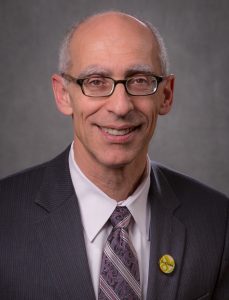
Dan Kalb

Nikki Fortunato Bas
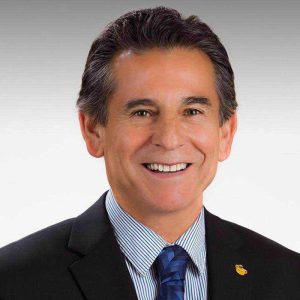
Noel Gallo

Carroll Fife
Oakland Council President Nikki Fortunato Bas and her budget team of Councilmembers Carroll Fife, Dan Kalb, and Noel Gallo sent a joint letter to Mayor Libby Schaaf, Administrator Ed Reiskin and Police Chief LeRonne Armstrong on July 1 expressing serious concerns that the administration and police department have been sharing inaccurate and misleading information regarding police funding in the Fiscal Year 2021-23 budget, passed on Thursday, June 24.
The City’s 2019-21 budget allocated $635,278,301 million for police spending; this total accounts for midcycle budget amendments made in 2020-21, whereas prior released numbers did not reflect these amendments. Oakland’s new 2021-23 budget allocates $673,819,639 million for police spending, a $38,541,338 million (+6%) increase from the last budget cycle in the City’s General Purpose Fund.
“I am disappointed by our mayor and police Chief characterizing Oakland’s new budget to the media and general public as having ‘defunded’ or ‘decimated’ the police budget, when in fact total resources allocated for policing have increased by 6% or $38.5 million in this budget, compared to our last two-year budget,” said Council President Bas.
“Since 2012, OPD’s budget has increased by more than $100 million,” she said. “As leaders of our city, we must not use exaggerated, inaccurate information. It prevents us from coming together to focus on strengthening our public safety system’s ability to address violent and serious crime, while transitioning to build effective alternatives for non-violent, low-level 911 calls for service.”
Said Councilmember Gallo, “We did not defund the police. It was about reform and clearly defining our priorities and services to better serve Oakland. Public safety begins at home and in the neighborhood. We need to create jobs, open our parks and libraries, and support our schools.”
Mayor Schaaf’s proposed 2021-23 budget would have increased police spending to $692,584,997 million. Council President Bas’ budget increased police spending but redirected $18,765,358 million of Schaaf’s proposed increase towards tripling the Department of Violence Prevention’s budget and expanding MACRO, Oakland’s civilian crisis response program in the Fire Department.
The Police Department’s projected staffing levels in the first year are the same in both Mayor Schaaf’s proposal and the budget passed by the Council, which will serve as a transitional year to divert non-criminal, non-violent 911 calls to alternative responses in the Fire and Transportation Departments.
The goal of the council members has been to define violence interruption and fund plans to expand violence prevention in 2021-23.
On June 29, Bas convened a public panel on the Department of Violence Prevention’s plans to expand violence prevention efforts in Oakland using its significantly increased budget with Guillermo Cespedes, Oakland’s Chief of Violence Prevention, as well as life coaches and violence interrupters leading frontline organizations addressing gun / gang / group violence, gender-based violence, human trafficking, and trauma in Oakland.
During the discussion, Chief Cespedes explained that San Francisco’s 2020 homicide rate was 5 homicides per 100,000 residents, with 32 violence interrupters; Los Angeles’ rate hovers around 10 homicides per 100,000 residents, with 132 violence interrupters.
By contrast, Oakland is severely understaffed: our homicide rate was 24 homicides per 100,000 residents, with only 10 violence interrupters.
Read the open letter to Mayor Schaaf and Police Chief Armstrong at https://drive.google.com/file/d/17R5uY1DQfUXKLw2N_9RnRwvDOPv03uew/view
Activism
Oakland Post: Week of April 24 – 30, 2024
The printed Weekly Edition of the Oakland Post: Week of April 24 – 30, 2024

To enlarge your view of this issue, use the slider, magnifying glass icon or full page icon in the lower right corner of the browser window. ![]()
Alameda County
DA Pamela Price Stands by Mom Who Lost Son to Gun Violence in Oakland
Last week, The Post published a photo showing Alameda County District Attorney Pamela Price with Carol Jones, whose son, Patrick DeMarco Scott, was gunned down by an unknown assailant in 2018.

Publisher’s note: Last week, The Post published a photo showing Alameda County District Attorney Pamela Price with Carol Jones, whose son, Patrick DeMarco Scott, was gunned down by an unknown assailant in 2018. The photo was too small for readers to see where the women were and what they were doing. Here we show Price and Jones as they complete a walk in memory of Scott. For more information and to contribute, please contact Carol Jones at 510-978-5517 at morefoundation.help@gmail.com. Courtesy photo.
Bay Area
State Controller Malia Cohen Keynote Speaker at S.F. Wealth Conference
California State Controller Malia Cohen delivered the keynote speech to over 50 business women at the Black Wealth Brunch held on March 28 at the War Memorial and Performing Arts Center at 301 Van Ness Ave. in San Francisco. The Enterprising Women Networking SF Chapter of the American Business Women’s Association (ABWA) hosted the Green Room event to launch its platform designed to close the racial wealth gap in Black and Brown communities.
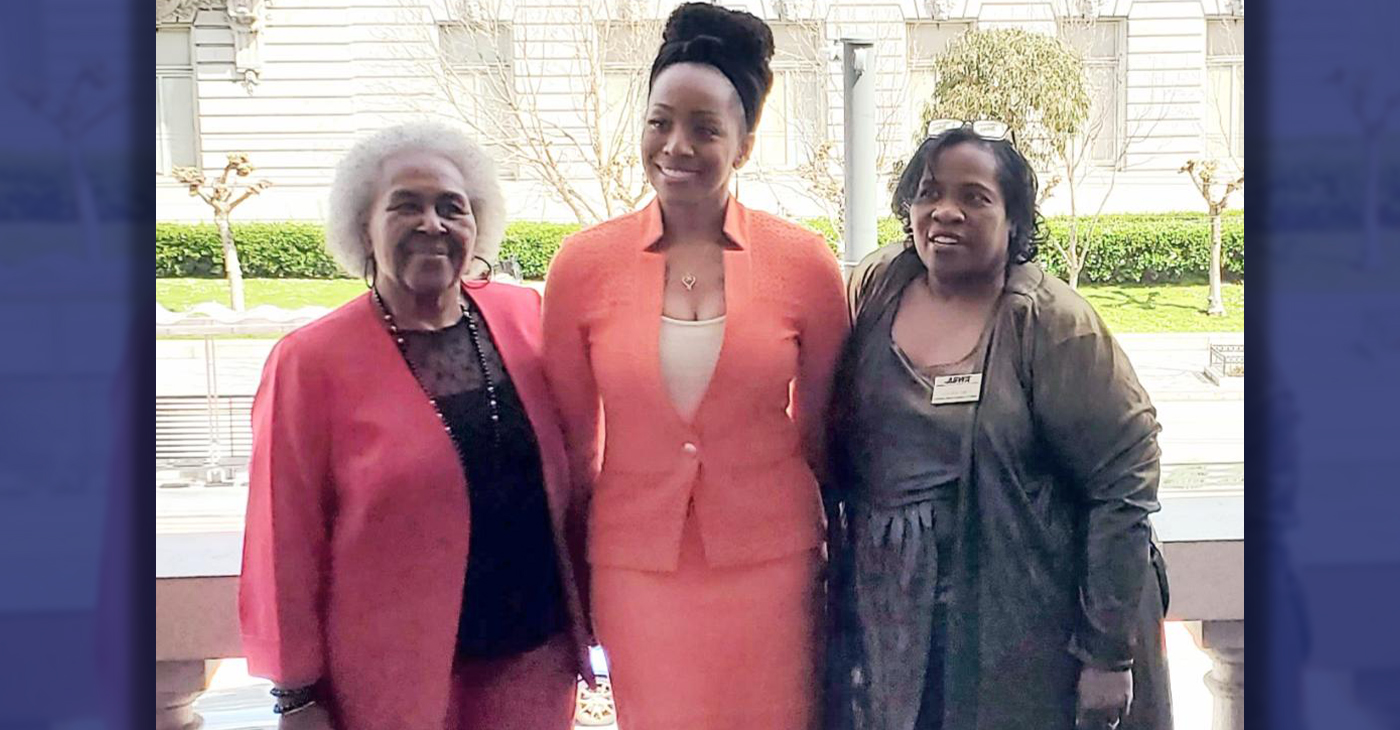
By Carla Thomas
California State Controller Malia Cohen delivered the keynote speech to over 50 business women at the Black Wealth Brunch held on March 28 at the War Memorial and Performing Arts Center at 301 Van Ness Ave. in San Francisco.
The Enterprising Women Networking SF Chapter of the American Business Women’s Association (ABWA) hosted the Green Room event to launch its platform designed to close the racial wealth gap in Black and Brown communities.
“Our goal is to educate Black and Brown families in the masses about financial wellness, wealth building, and how to protect and preserve wealth,” said ABWA San Francisco Chapter President LaRonda Smith.
ABWA’s mission is to bring together businesswomen of diverse occupations and provide opportunities for them to help themselves and others grow personally and professionally through leadership, education, networking support, and national recognition.
“This day is about recognizing influential women, hearing from an accomplished woman as our keynote speaker and allowing women to come together as powerful people,” said ABWA SF Chapter Vice President Velma Landers.
More than 60 attendees dined on the culinary delights of Chef Sharon Lee of The Spot catering, which included a full soul food brunch of skewered shrimp, chicken, blackened salmon, and mac and cheese.
Cohen discussed the many economic disparities women and people of color face. From pay equity to financial literacy, Cohen shared not only statistics, but was excited about a new solution in motion which entailed partnering with Californians for Financial Education.
“I want everyone to reach their full potential,” she said. “Just a few weeks ago in Sacramento, I partnered with an organization, Californians for Financial Education.
“We gathered 990 signatures and submitted it to the [California] Secretary of State to get an initiative on the ballot that guarantees personal finance courses for every public school kid in the state of California.
“Every California student deserves an equal opportunity to learn about filing taxes, interest rates, budgets, and understanding the impact of credit scores. The way we begin to do that is to teach it,” Cohen said.
By equipping students with information, Cohen hopes to close the financial wealth gap, and give everyone an opportunity to reach their full financial potential. “They have to first be equipped with the information and education is the key. Then all we need are opportunities to step into spaces and places of power.”
Cohen went on to share that in her own upbringing, she was not guided on financial principles that could jump start her finances. “Communities of color don’t have the same information and I don’t know about you, but I did not grow up listening to my parents discussing their assets, their investments, and diversifying their portfolio. This is the kind of nomenclature and language we are trying to introduce to our future generations so we can pivot from a life of poverty so we can pivot away and never return to poverty.”
Cohen urged audience members to pass the initiative on the November 2024 ballot.
“When we come together as women, uplift women, and support women, we all win. By networking and learning together, we can continue to build generational wealth,” said Landers. “Passing a powerful initiative will ensure the next generation of California students will be empowered to make more informed financial decisions, decisions that will last them a lifetime.”
-

 Activism4 weeks ago
Activism4 weeks agoOakland Post: Week of March 27 – April 2, 2024
-

 #NNPA BlackPress4 weeks ago
#NNPA BlackPress4 weeks agoBeloved Actor and Activist Louis Cameron Gossett Jr. Dies at 87
-
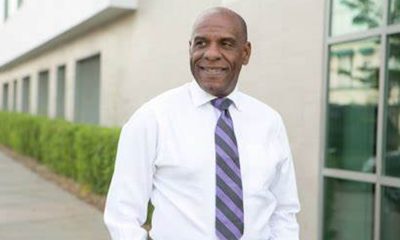
 Community1 week ago
Community1 week agoFinancial Assistance Bill for Descendants of Enslaved Persons to Help Them Purchase, Own, or Maintain a Home
-
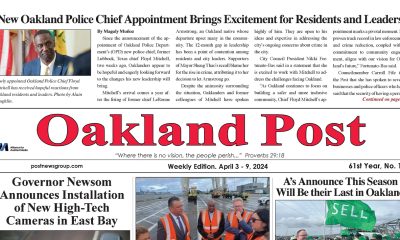
 Activism3 weeks ago
Activism3 weeks agoOakland Post: Week of April 3 – 6, 2024
-

 Business1 week ago
Business1 week agoV.P. Kamala Harris: Americans With Criminal Records Will Soon Be Eligible for SBA Loans
-
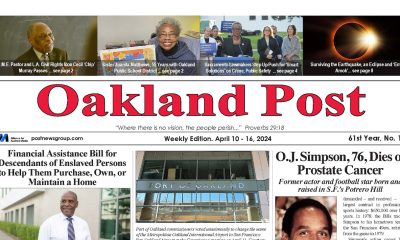
 Activism2 weeks ago
Activism2 weeks agoOakland Post: Week of April 10 – 16, 2024
-

 Community1 week ago
Community1 week agoAG Bonta Says Oakland School Leaders Should Comply with State Laws to Avoid ‘Disparate Harm’ When Closing or Merging Schools
-

 Community6 days ago
Community6 days agoOakland WNBA Player to be Inducted Into Hall of Fame


















































